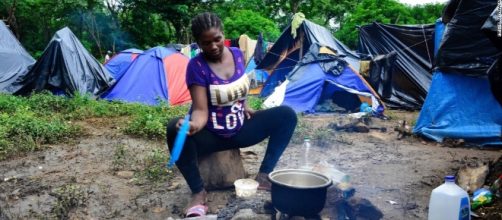If you Google "Paso Canoas border," the first search results are likely to consist of information for travelers and backpackers crossing the border from Panama into Costa Rica. You will have to search a bit further before you find news articles about a full-blown migrant crisis that is overwhelming Costa Rica's southern border crossing. The Costa Rican government is doing its best to process the thousands of people on a long journey through Central America to the United States by issuing migrants a traveling visa called, “Laissez Passer” as of last April, to travel north to the United States.
Unfortunately, migrants are finding that, as they arrive in Nicaragua, the border has been closed to passing migrants, and many are living on the border in overcrowded and unsanitary conditions -- unable to continue their journey.
Where are the migrants coming from?
Tens of thousands of migrants, overwhelmingly from Haiti and the Congo, have flooded Central American borders. While many claim to be from the Congo, it is suspected that most are from Haiti. Migrants claim to be from the Congo in order to avoid deportation back to Haiti. Governments can’t afford to deport people back to the Congo and migrants do not have documents, so it’s a way to continue the journey.
After the 2010 earthquake in Haiti, Brazil opened its borders to Haitian refugees but the relief benefits have since expired, leaving little opportunity to make a living, so individuals and families are journeying north through South and Central American countries with the hope of entering the United States.
Post-earthquake in 2010, President Obama opened U.S borders to Haitian refugees -- but it has since been revoked.
Dangers of the journey
The Costa Rican government is doing its best to implement programs, provide amenities, and issue visas to the giant influx of migrants entering the southern border. Costa Rican communications minister Mauricio Herrera Ulloa stated that the country is very overwhelmed, as this problem was unforeseen, but officials are working to protect the human rights of those journeying north.
Shelters have also been set up in old warehouses that provide migrants with a place to stay and food. The International Organization of Migration (IOM) provides workshops to educate people about the dangers of human trafficking. With an estimated 40,000 migrants on the trail north, the possibility of becoming a victim of trafficking and exploitation is a potential issue.
While Costa Rica and IOM are able to provide commodities and workshops on the border once migrants reach Nicaragua, they are not permitted to advance any further.
The Central American migrant crisis has become a question of government resources and responsibility. Many fled their homeland of Haiti after a natural disaster that left large numbers of people with nothing. In the immediate aftermath outside governments offered assistance but not in a sustainable way. Now, tens of thousands of people are migrating through South and Central America with no real rights or protection, but most governments have stopped helping Haitians. The future of these migrants is uncertain, and in order to provide a more stable future, an international effort must be put forth.


